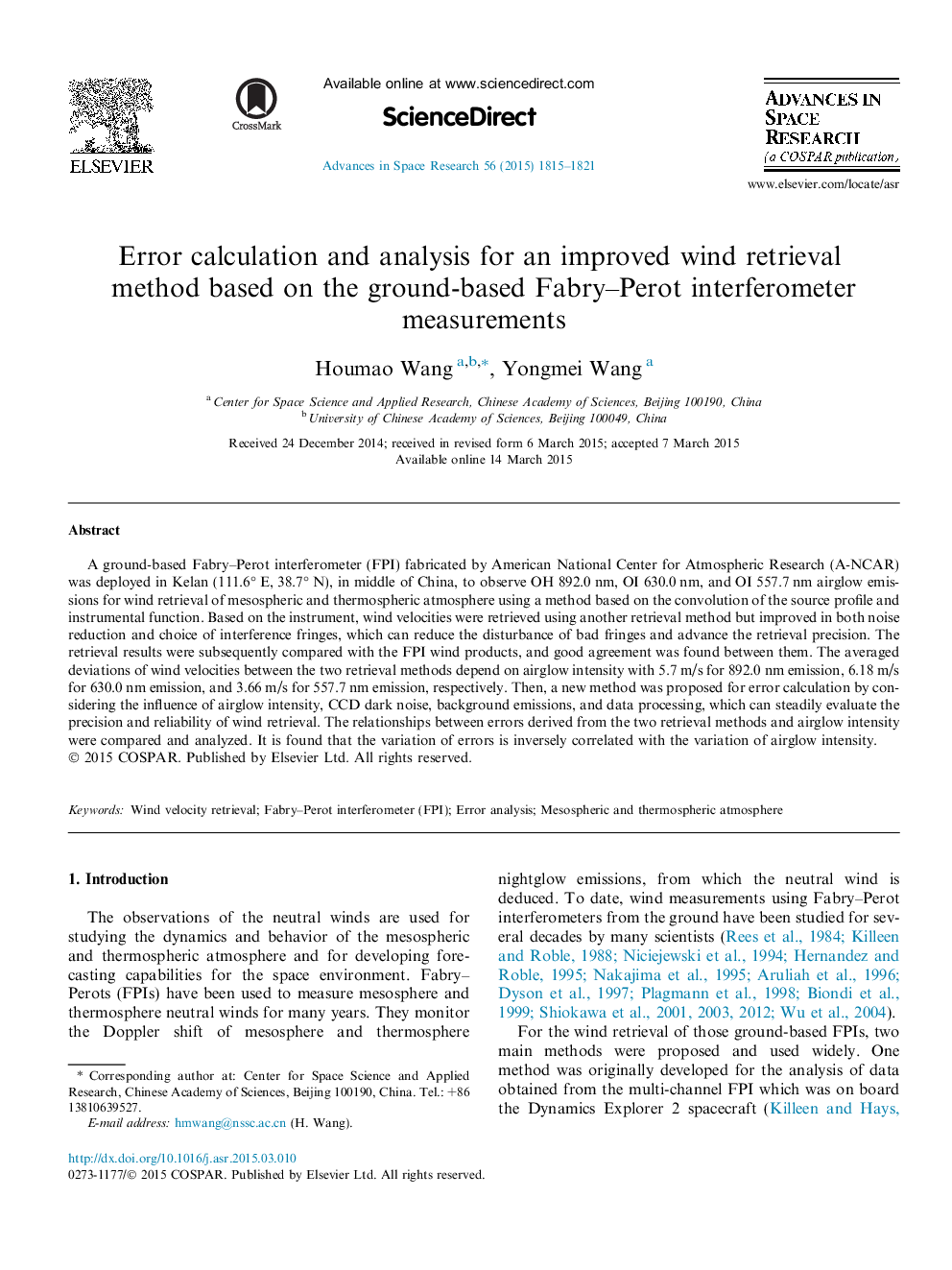| Article ID | Journal | Published Year | Pages | File Type |
|---|---|---|---|---|
| 1763642 | Advances in Space Research | 2015 | 7 Pages |
•An improved method for wind retrieval avoiding the disturbance of bad fringes.•A new method for error calculation of wind retrieval considering all of the factors.•The results of two retrieval methods were compared and analyzed in detail.
A ground-based Fabry–Perot interferometer (FPI) fabricated by American National Center for Atmospheric Research (A-NCAR) was deployed in Kelan (111.6° E, 38.7° N), in middle of China, to observe OH 892.0 nm, OI 630.0 nm, and OI 557.7 nm airglow emissions for wind retrieval of mesospheric and thermospheric atmosphere using a method based on the convolution of the source profile and instrumental function. Based on the instrument, wind velocities were retrieved using another retrieval method but improved in both noise reduction and choice of interference fringes, which can reduce the disturbance of bad fringes and advance the retrieval precision. The retrieval results were subsequently compared with the FPI wind products, and good agreement was found between them. The averaged deviations of wind velocities between the two retrieval methods depend on airglow intensity with 5.7 m/s for 892.0 nm emission, 6.18 m/s for 630.0 nm emission, and 3.66 m/s for 557.7 nm emission, respectively. Then, a new method was proposed for error calculation by considering the influence of airglow intensity, CCD dark noise, background emissions, and data processing, which can steadily evaluate the precision and reliability of wind retrieval. The relationships between errors derived from the two retrieval methods and airglow intensity were compared and analyzed. It is found that the variation of errors is inversely correlated with the variation of airglow intensity.
